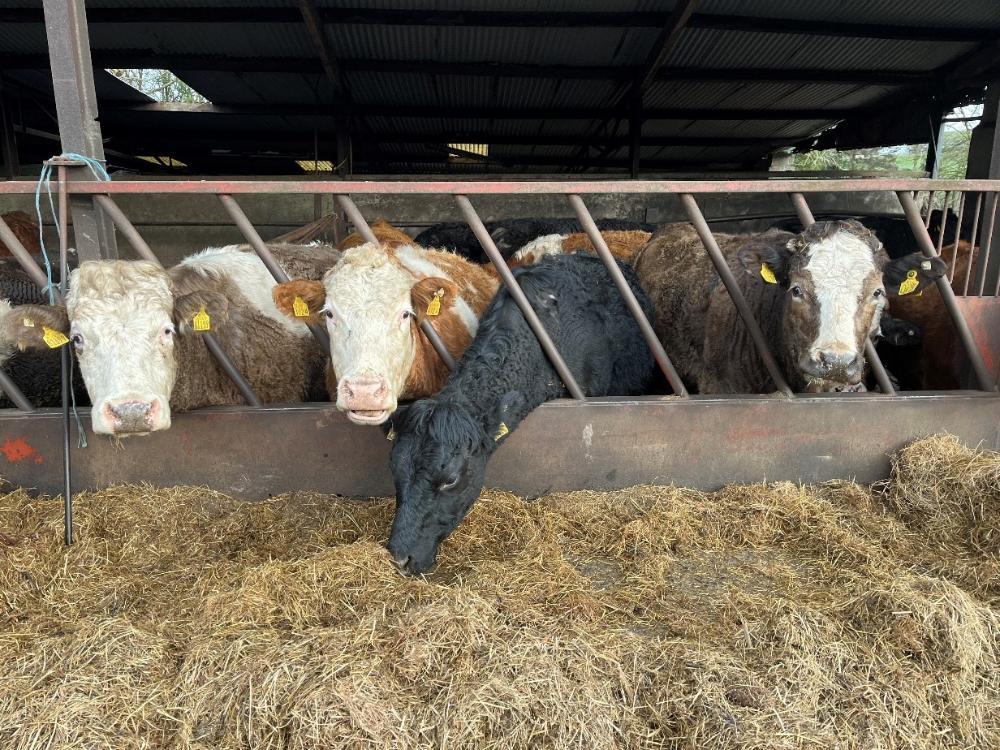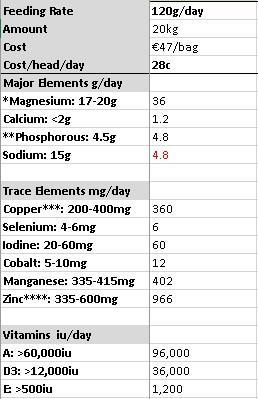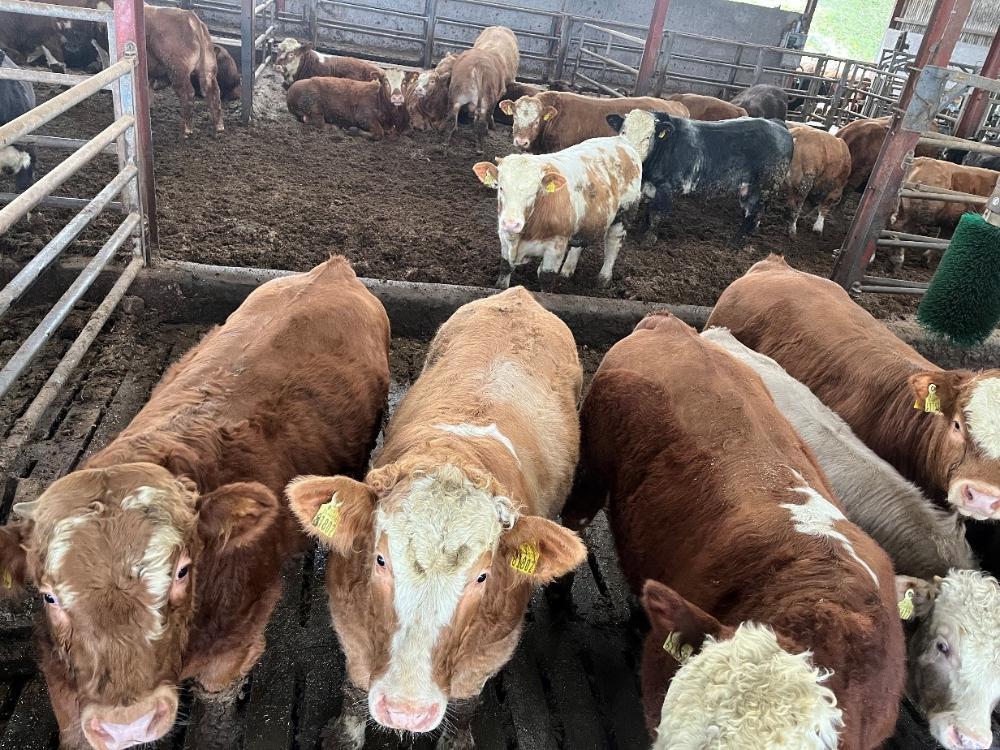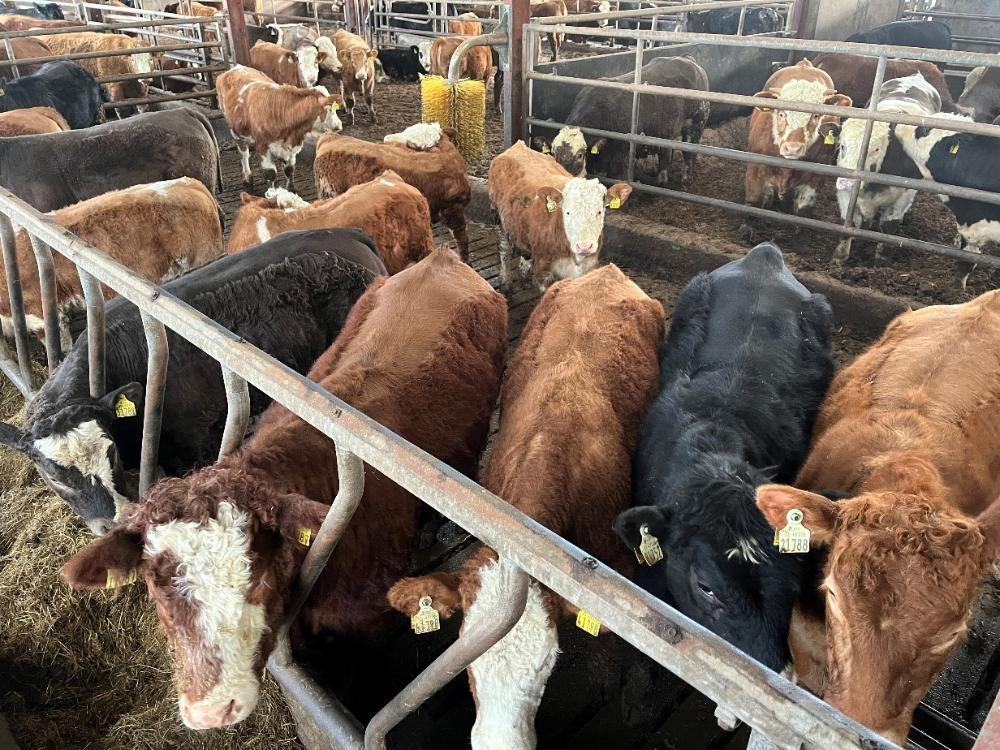Management pre-calving
- Cows are due to calve from the end of February
- Minerals & soyabean meal fed pre-calving
- Good quality silage is being restricted
Wesley’s cows are expected to start calving rom the end of February. They are on high quality silage so he is restricting them on it to ensure that they don’t get too frat before calving. They are penned according to their due dates and there is enough feed space in each bay to make sure that they can all eat with the same time which is important when restrict feeding them.

Figure 1: In-calf cows can all feed at the same time while being fed restrictively
Some extra heifers are in calf and are due to calve next autumn so Wesley has made the decision to sell them live while the trade is so good.
The in calf heifers and cows are being fed 0.5kg of soyabean meal/head/day to boost colostrum quality, along with a dry cow mineral for at least 6 weeks pre-calving. The mineral is costing 28c/head/day and is very well balanced for what is required by suckler cows pre calving. Figure 2 below shows that it is providing enough magnesium, calcium, phosphorus, copper, selenium, iodine, cobalt, manganese, zinc and vitamins A, D3 and E when fed at a rate of 120g/head/day. It is low in sodium but this does not cause any issues for Wesley at calving so it is not a major concern.

Figure 2: Minerals and vitamins required pre-calving (left) and actual ones provided by Wesley’s pre-calving mineral (right)
The 2024 born bulls (40) were weighed on 17th January. They averaged 417kg live weight, with an average date of birth of 5th April 2024. They gained 1.67kg on average per day since 4th December. However when they are divided based on whether they were creep fed meal before weaning it shows the following;
Wesley will continue to weigh them monthly to see if the lighter bulls catch up but is very happy with their growth rates over the last month.

Figure 3: Some of the under 16 month bulls
The 2024 heifers (31) were also weighed on 17th January. They averaged 317kg and 5 matched heifers gained 1.11kg/day since 2nd November.

Figure 4: The 2024 born heifers are averaging 317kg
The 2023 heifers (27) were weighed on 23rd January and averaged 509kg.
Two cows were sold to the factory on 14th January. They averaged 372kg carcass weight and graded R+3+, making €2019 per head on average.
Four in-calf heifers were sold privately on 31st January.
Five cows were sold through the mart on 15th February.
Wesley has completed his profit monitor for 2024. On analysis of the cattle detailed report, he is happy with the farm’s financial and physical performance this year.
The first figure on the report is the output per livestock unit which was 380 kg/LU. This was an increase since 2023 where the figure was 365 kg/LU, but it is well ahead of the target >350 kg/LU for a suckler system. This figure is affected by everything that affects weight gain in the herd – the cow fertility, bull fertility, mortality, genetics, nutrition at grass, winter performance, ration fed, animal health and calving spread. The high output bull beef system and excellent management is giving him a good performance per livestock unit on the farm.
The stocking rate on the farm is 2.25 LU/ha or 169 kg organic N/ha which means that Wesley is not in derogation, but is teetering on the edge of it.
The gross output figure is calculated from cattle sales minus cattle purchases and add/subtract any changes to the inventory. Wesley had a gross output figure of €2945/ha which is the main ‘money in the pot’ to cover variable and fixed costs. This increased by 18% from €2452/ha in 2023.
The 3 biggest expenses on drystock farms are purchased concentrate, fertiliser and contractor costs. Wesley’s farm is no different with his biggest costs for the year;
In total, the total variable costs (€1360/ha) were 46% of the gross output figure, which is well ahead of the target of <55% for a bull beef system. It is well back on 2023 where it was 53% – mainly due to a 34% higher beef price from cattle sold off the farm.
The fixed costs were €910 for 2024 which is similar to 2023. While machinery running costs reduced in 2024, the repairs and maintenance costs increased across the farm due to investments into a cattle crush, clipex poles and the calving shed. For 2024 the cattle enterprise made €702/ha net margin which does not include any direct payments or subsidies. This is a 112% increase from €197/ha in 2023.